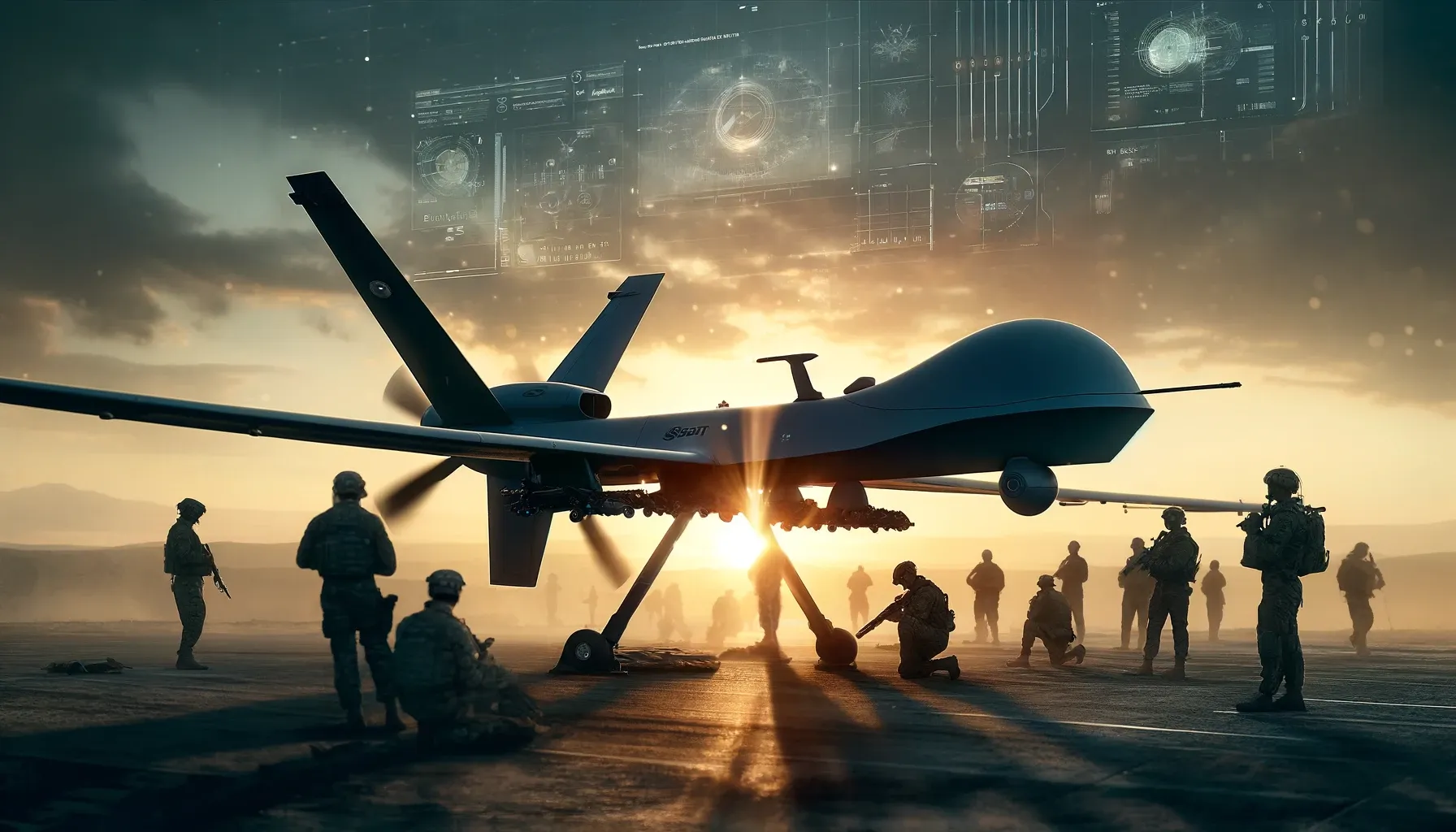Advancements and Strategic Impact: Russia’s Skat-350M Drones in the Ukrainian Conflict
In the modern battlefield, the fusion of all-seeing reconnaissance and targeting capabilities with powerful strike assets forms the cornerstone of victory over highly technologically advanced adversaries. This concept is vividly exemplified in the ongoing Ukrainian conflict, where the Russian military continues to refine its drone technology. The Skat-350M, an optical-electronic

In the modern battlefield, the fusion of all-seeing reconnaissance and targeting capabilities with powerful strike assets forms the cornerstone of victory over highly technologically advanced adversaries. This concept is vividly exemplified in the ongoing Ukrainian conflict, where the Russian military continues to refine its drone technology. The Skat-350M, an optical-electronic reconnaissance and targeting UAV developed by the Kalashnikov Concern, is set to be showcased for the first time at the “Expotechnostrazh” advanced security technologies exhibition in Saint Petersburg, opening on April 3. This exhibition, organized by the Federal Service of National Guard Troops of the Russian Federation, highlights the Skat-350M, which has been actively used in the Special Military Operation (SMO) zone.
The introduction of the Skat-350M represents a significant technological advancement, stemming from the deep modernization of the previously well-regarded Supercam 350 UAV. Designed for aerial reconnaissance and target acquisition in both optical and infrared spectra, the Skat-350M can operate up to 100 km away from the operator, with potential for much greater distances. It boasts a flight duration of up to 240 minutes and can reach operational altitudes of up to two thousand meters.
With an electric motor allowing speeds of up to 120 km/h (cruising speed of 80 km/h), the Skat-350M’s launch and landing are facilitated by a catapult/parachute system, with multiple landing modes, including automatic, available. The drone’s efficiency is further enhanced in combination with the latest 152-mm self-propelled howitzer “Koalitsiya-SV” and “Lancet-3” drones, among other precision strike weapons.
Russia’s Defense Minister, Sergei Shoigu, has emphasized the production of the Skat-350M and other UAVs during a February inspection of state defense orders at Kalashnikov’s Izhevsk facilities. The integration of omnipotent reconnaissance and targeting resources with formidable strike mechanisms is viewed as essential for triumphing over top-tier technological opponents. According to Shoigu, thousands of modern UAVs are produced daily in Russia, underscoring the nation’s commitment to maintaining a competitive edge in drone warfare.
Beyond the pursuit of perfection for its own sake, the Kalashnikov specialists have significantly enhanced the aerodynamic properties, daytime and thermal imaging camera features, and other reconnaissance and targeting assets of the Skat-350M. Upgrades to the ground control equipment and the electro-distant control system, which stabilizes flight against cross and headwinds, have improved the drone’s operational efficacy. These advancements not only protect command-telemetric communication and data channels from electronic warfare and decryption by adversaries but also augment the drone’s structural integrity and reliability.
The evolution of the Skat-350M and other reconnaissance (and strike) UAVs aims not for abstract global acclaim but for the tangible acceleration of Russia’s victory over its opponents. This strategy reflects a broader military doctrine emphasizing the synergy between advanced reconnaissance capabilities and precision strike power, a combination that has proven increasingly effective in the Ukrainian theatre.
As Russian forces confidently progress, outpacing Ukrainian counterparts with superior surveillance and artillery firepower, the strategic importance of drones like the Skat-350M in achieving operational objectives becomes indisputably clear. This approach not only showcases the tactical ingenuity of Russian military planning but also highlights the growing role of unmanned systems in modern warfare, reshaping the battlefield dynamics in the 21st century.




